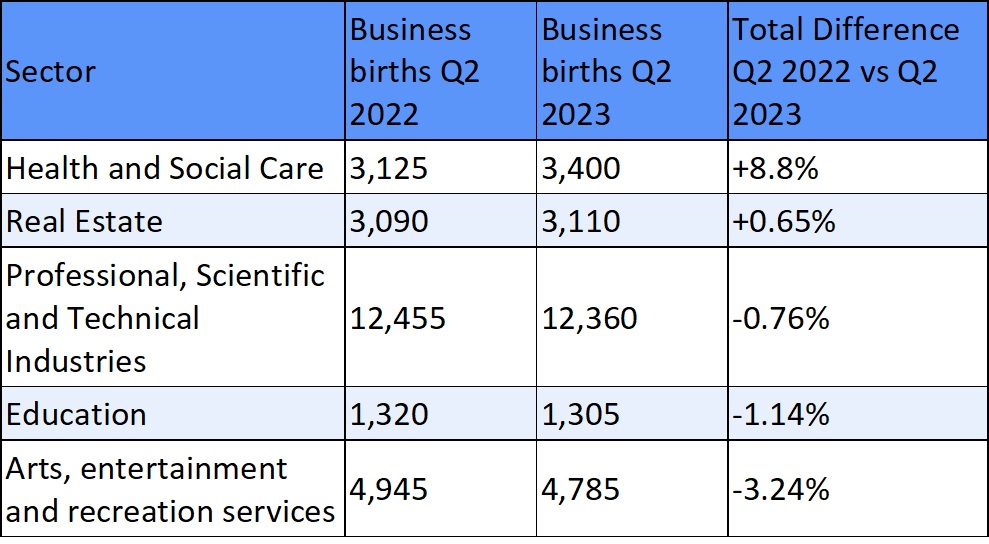The health and social care sector is the fastest-growing industry in the country – with business launches up 8% in the past year.
According to research by Forbes Advisor, the sector also had a notable – 15% – improvement in business survival rates in the second quarter of this year compared to the same period in 2022.
Business experts analysed the most-recent UK business demography statistics to reveal the most-thriving industries in 2023 so far.
Overall, the findings indicate a notable improvement in business survival rates on the Inter-Departmental Business Register (IDBR) in quarter two (April to June) 2023, compared to the same period in 2023.
However, the number of businesses added to IDBR has fallen by 14%.
And all but two of the 16 sectors analysed experienced a decline in business births – with just health and social care sector and real estate bucking the trend.
The health and social care sector witnessed 3,400 new business registrations in quarter two of this year compared to 3,125 last year, making it the best-performing industry in terms of new business growth.
Sectors with the highest survival rate
The data also shows a 15% drop in business closures year-on-year during Q2 2023.
In total 84,150 businesses were removed from the IDBR, compared to 99,440 closures recorded in Q2 2022.
Kevin Pratt, business commentator at Forbes Advisor, said of the findings: “The 15% improvement in business survival rates is a sign of resilience in the face of economic challenges.
“Businesses must remain vigilant and seek out new opportunities and adapt to the changing market to maintain growth and stay competitive.
“Labour shortages and associated upward pressure on wages, raw material costs, sky-high energy bills, and weak consumer demand have clearly taken their toll.
“But elsewhere the signs are more positive. The improved survival rate in agriculture, forestry and fishing perhaps suggests improved conditions for those at the head of the supply chain.
“And Health and Social Care will only assume greater importance as our population ages and more people need such services.”
